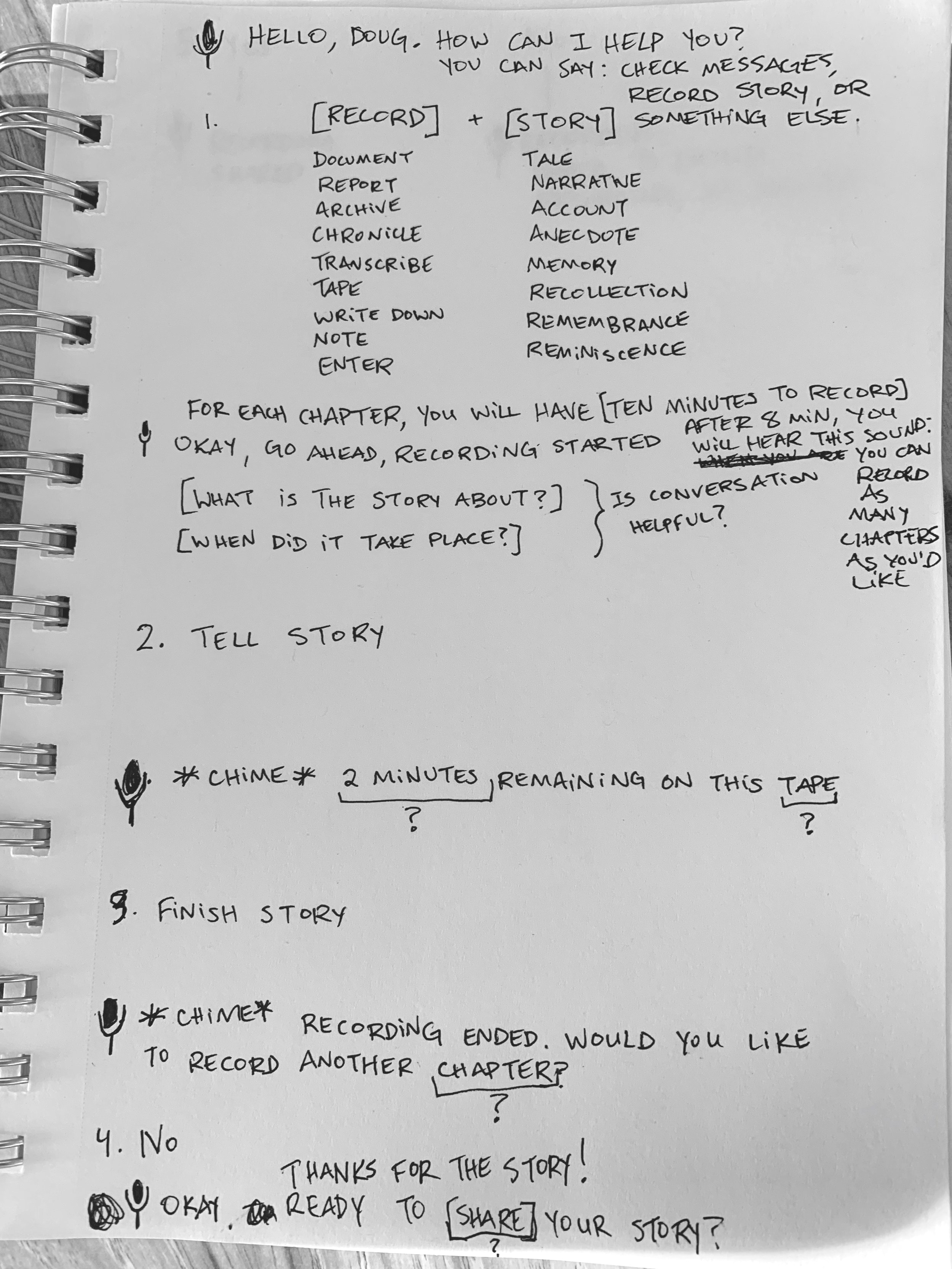STORYSTITCH:
AN ELDER-CENTRIC STORYTELLING AND NETWORKING APP
CHALLENGE
My extensive ethnographic work with older adults had highlighted two interconnected issues surrounding aging and communication: the social isolation of elders and the desire of families to share and store family histories across time and distance.
solution
I created a mobile app that utilized voice UI functionality to help older adults record stories and share them with a network of family and friends. Family and friends could also reply to stories or send follow-up questions in order to foster active cross-generational communication.
Methods
Artifact Analysis
Contextual Inquiry
Directed Storytelling
Storyboards
Wizard of Oz
tools
Adobe XD
Sketch
InVision
deliverables
Interactive Prototype
Voice UI (VUI) Script
A challenge close to home
During an afternoon chat over the fence, my 90-year-old neighbor, Alvie, was telling me that her quality of life had decreased significantly since losing her most of her eyesight to macular degeneration over the past couple years. Although her family visited regularly, she couldn’t take care of her flowers, her cat had recently died, and she didn’t know why she kept waking up every morning. However, she told me that lately she’s been having vivid flashbacks of childhood memories:
“You want old stories? Oh boy, have I got old stories.”
How fascinating! I asked her if she had recorded them, but she said, no, she couldn’t see to write and she didn’t want to bother her children to write them down for her.
Alvie, a self-described “stubborn Swede.”
Researching a solution
I decided to try to find a solution. Because I was designing with Alvie’s independence in mind, I conducted artifact analysis and contextual inquiry to find out what types of tools she felt comfortable using in her daily life.
Artifact analysis and contextual inquiry.
prototypes and testing
To inform my design process, I conducted interviews with adults of all ages, using storyboards and directed storytelling. I realized that if my app was truly to be accessible for older adults, many of whom face a number of functional losses with age, it would need to utilize a range of inputs and feedback methods, including voice UI and haptic response.



Prototype testing with older adults.
exploring Voice UI
During initial prototype testing, I ran into a major challenge: many users had a difficult time discovering the voice UI (VUI). Without visual cues and instructions, how do users know what to do? How do they learn what they can do? This was a major issue, but results from user testing suggested that once it was resolved, the rest of the VUI interaction would be successful. Even users who had little to no experience with computers interacted comfortably with the VUI once they got started.


BRINGING IT BACK HOME
So I revised my script, focusing on creating rapport, simplifying options, making functionality more discoverable, and providing more wayfinding opportunities. I brought my prototype to Alvie for a trial run. To see it in action, from the perspectives of both older adult users (storytellers) and their family members, watch the videos below:
Thanks for taking the time to read about my work! If you have any questions or want to learn more, please get in touch: rose.keimig@gmail.com.


